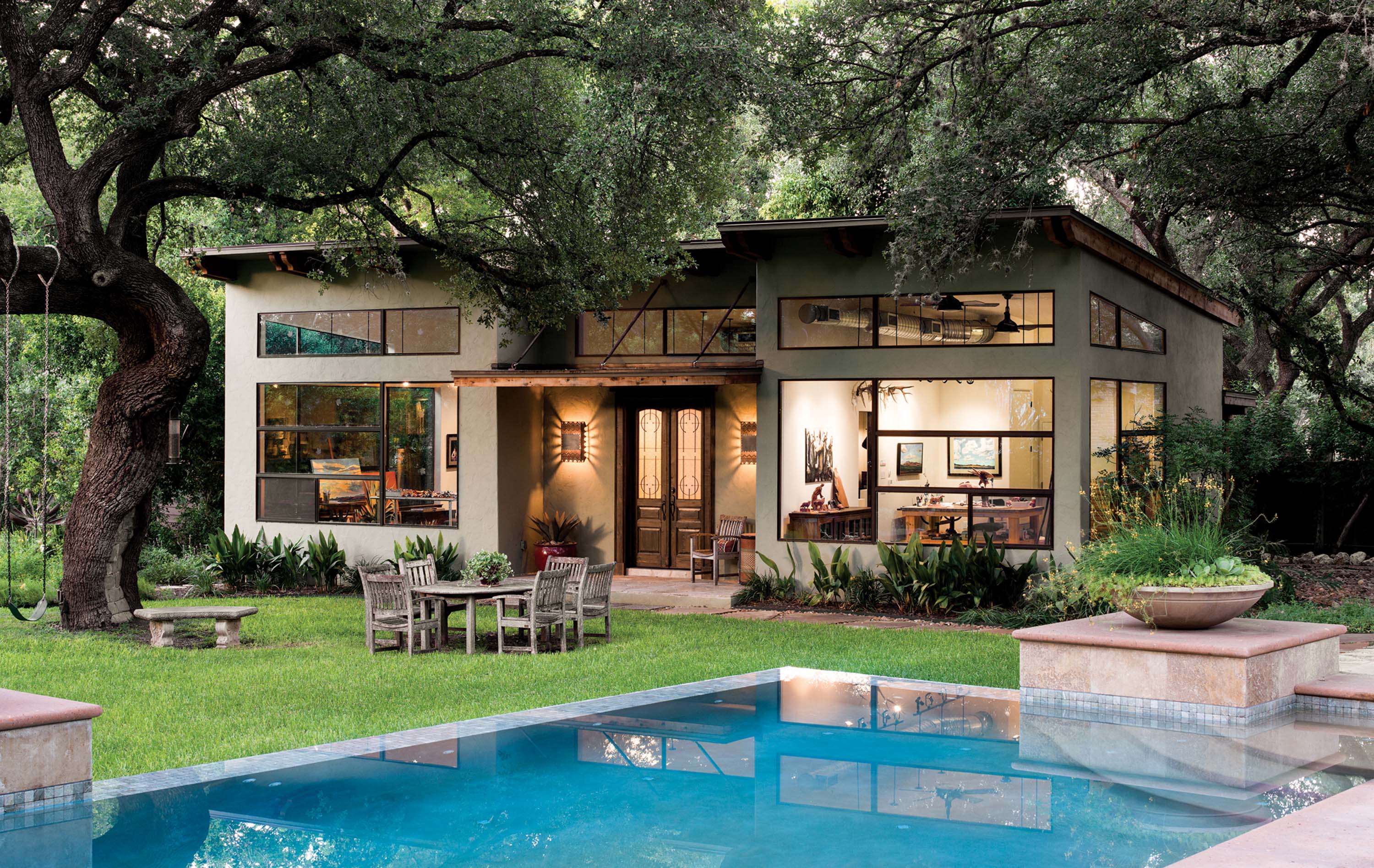
19 Oct In the Studio: Side by Side
Born and raised in San Antonio, Texas, William Carrington and Caroline Korbell Carrington often escape the lively city for solitude on family ranches located in Texas Hill Country and West Texas, landscapes identified by rugged hillsides dotted with limestone and granite boulders, yucca, cedar and prickly pear cactus. “We both grew up loving nature, so it just makes sense that he sculpts wildlife and I paint landscapes,” Caroline says.
William’s playful sculptures and Caroline’s bright paintings make the pair a creative duo, and when sharing a guest room converted into a studio became slightly distracting for the two professionals, the Carringtons decided to build a separate workspace in their backyard.
Their new studio was designed to complement the architecture of their home, which was built and lived in during the 1960s by acclaimed architectural designer Roger Rasbach [1928–2003]. Over the course of his 50-year career, the Houston-based designer was among the first to advocate for homes that conserved energy, rebuking stylistic trends in favor of functional sustainable practices. His homes often minimized west-facing windows, included shading with overhangs and were thoughtfully landscaped with trees and shrubs to reduce heat. In addition, he believed that a proper pitch to the roof and the practical use of materials would save energy equal to the home’s original cost over time.
Located in the heart of San Antonio, the Carringtons’ home is sited to provide a parklike feel on 2.3 acres. The home is set back from the street with plenty of old-growth oak trees that provide both privacy and coziness. Designed in a horseshoe shape, the 5,800-square-foot home seems to wrap around the backyard, emphasizing a connection with nature. Large, carefully placed windows provide views of the outdoors from each room.
“It’s Mediterranean, it has a little Spanish feel, but it’s also very contemporary as well. So it’s nice to have a home that doesn’t scream a particular style,” Caroline says. “It’s also very open. One of [Rasbach’s] traits was to bring the outside in, and so every room is a great space with windows framing the incredible landscape. We don’t believe in curtains. We like to look outside and wake up when the sun rises.”
Along with pioneering sustainable practices, Rasbach’s homes are also known for their classic contemporary design, sense of scale and place, and for their functionality, openness and flexibility. Each of these aspects is well represented in the 1,400-square-foot studio, which features a centralized gallery with “his and her” workspaces on the north and south ends. Built with similar materials as the white-stuccoed home, its exterior roofline mimics the sloping roof of the house and large windows continue Rasbach’s ideology of blending nature with architecture.
“We were just wanting our own special place to work,” Caroline says. “I wanted to make sure I was going to get good northern light. And we just wanted to be close together, but able to enter and exit without each other knowing. That’s why we put the gallery in the middle, to meet in the middle and have our work there.”
Caroline’s half of the studio includes adjustable wall easels for larger works. She likes to work on multiple paintings at once and a handful of other easels located around the studio carry colorful landscapes with tubes of paints and boxes full of
chalk pastels at the ready. In William’s studio, stacks of wildlife magazines are available for reference and sculptures of animals in various stages of completion, from armature to foundry-ready, sit on a large table situated to look out across the yard.
“I’ve always been artistic,” says William, who received a bachelor’s degree in fine arts from Southwest Texas State in 1989. After graduation, he worked as a graphic designer in San Antonio before returning to school to earn a master’s degree in teaching art from Trinity University. He then taught elementary school for 16 years. About four years ago, William took “a leap of faith” and decided to pursue art full time as a sculptor.
An avid outdoorsmen and hunter, his work captures the gestural qualities of animals. Given his experience with the outdoors, he found that sculpting the anatomy of animals came quickly and he could take fundamental shapes a step further by exaggerating the features that make each one unique. “I find myself laughing sometimes when I do them; they crack me up,” William says of his quizzical rabbit sculptures, with their tilted heads and long ears, in particular.
Caroline’s work focuses on the rich hues of Southwestern skies and captures the rare touches of purple and red found in prickly pear cactus. Her vibrant work depicts the rugged landscapes she favors — the Southwest, and especially Texas Hill Country and West Texas. “Whenever I come to the studio to paint, I want to paint the place that I love,” she says. “So I spend a lot of time painting places that I know, usually my family’s ranch.”
Caroline graduated from Texas Christian University (TCU) with a bachelor of fine arts degree in painting in 1992. She credits landscape artist Jim Woodson, a TCU professor for 25 years and the 2013 Texas artist of the year, for influencing her work and inspiring her with his passion for representational landscapes in a collegiate world of abstract art. They also shared a love of Santa Fe, New Mexico, where Caroline spent summers working en plein air and studying under renowned landscape artist David Barbero.
“I really haven’t been interested in doing anything else over the years. People always ask why don’t you do a portrait or this and that, but I love painting landscapes,” Caroline says. “When I was young, in college, I liked to do a lot of plein air but now I do more studio work, in part because of my family. I sketch with pastels on-sight because they are fast and immediate and then in the studio, I’ll change it up.”
In addition to creating work, the Carringtons are avid collectors, especially of local San Antonio artists they have known or worked with. Work by Chuck Ramirez, Charles Field, Roseta Santiago, Pedro Diego Alvarado, Bettie Ward, Danville Chadbourne, Cecil Casebier, Jim Woodson and Philip John Evett fill the walls of their home with color and connect the Carringtons to specific memories. “Anything I love or that makes me happy is what I like to collect. And so far every artist I’ve either worked for or with, I have one of their pieces,” Caroline says. “I’ve never really thought there was a theme [to the collection], I just bought it because I loved it. You buy what you love, and it’s a story of you. It’s a story of your life and what you like. The painting doesn’t have to match the sofa.”
“It’s kind of our own little oasis. It’s definitely an escape home. A great escape,” Caroline says.
- Oil paints are used to capture the color and values of a southwestern landscape.
- William Carrington | “¡Esperéme!” | Bronze | 30 x 10 inches
- Built of similar materials and in a similar style, the studio and gallery space is a perfect complement to the Carringtons’ home.
- Smaller pastels sketched en plein air are used as reference for larger works.
- As artists, collectors and patrons of the san antonio art scene, the couple’s shared passion for art brought them together initially and facilitated many lasting friendships and experiences over the years. Many of these memories hang in effigy on the walls of their home.
- Caroline Korbell Carrington | “Afternoon Clouds” | Oil on Paper | 18 x 22 inches
- One of Caroline’s palettes in progress looks like its own work of art.
- Caroline loves to paint landscapes because she feels the need to be true to her unique voice and perspective. “You always think that everything has been done before. It’s like how many times can someone draw the human body? But you could draw it over and over again and it will be different every single time because everyone has their own little frame for every thing.”
- “Nature is so important to both of us. Obviously, you can tell, we love the outdoors,” William said, directing his gaze to the greenery outside his studio windows.
- The gallery is located between William’s and Caroline’s studios. in addition, Caroline is represented by the Hunt Gallery in San Antonio and William is represented by Parchman Stremmel Gallery in San Antonio. They both are represented Kiowa gallery in Alpine, Texas.
- He donated one of his works, “Mother Owl and Owlets,” to a fundraiser for the Juvenile Diabetes Research Foundation. The sculpture sold at auction for $75,000.
- William’s tools of the trade.








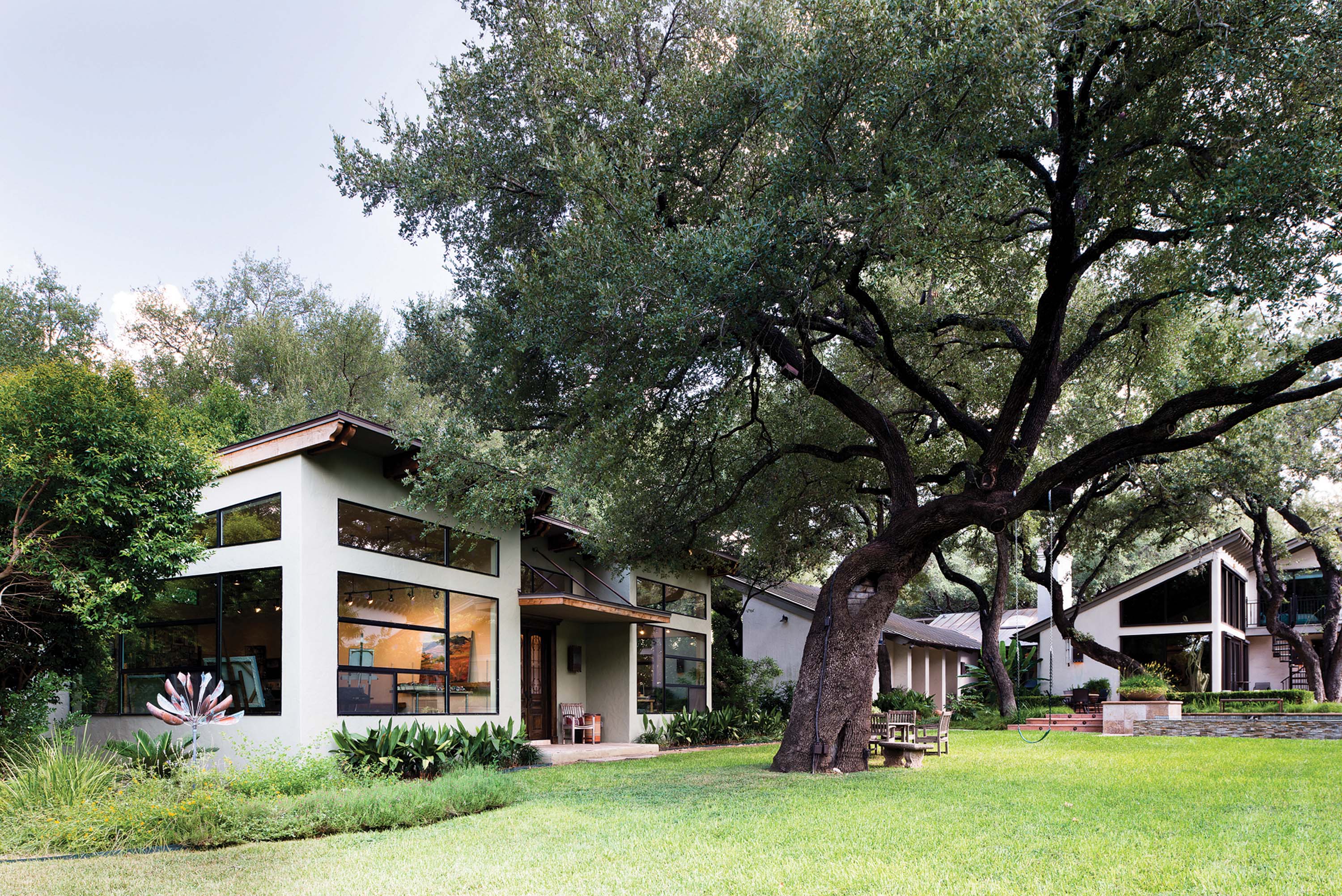
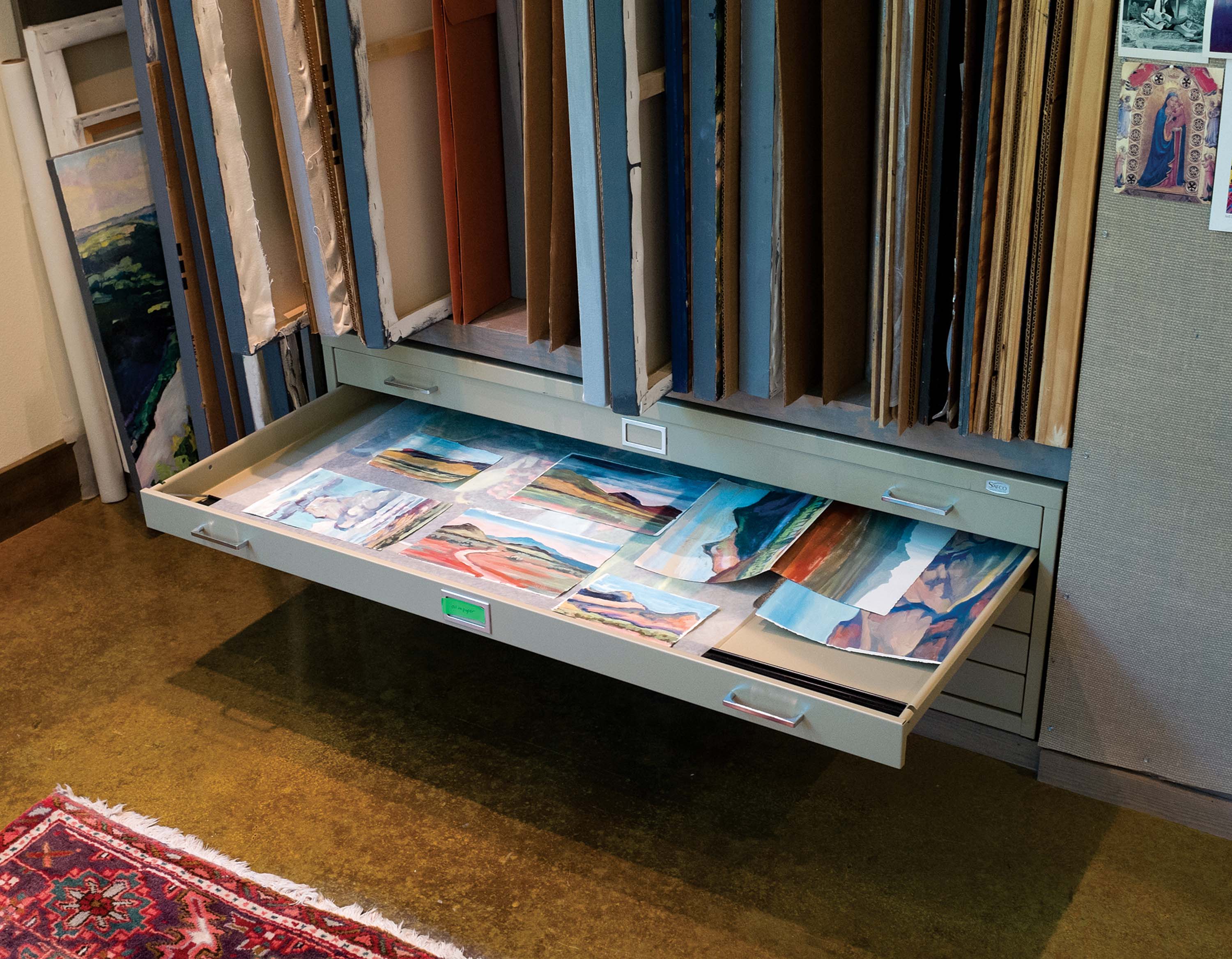
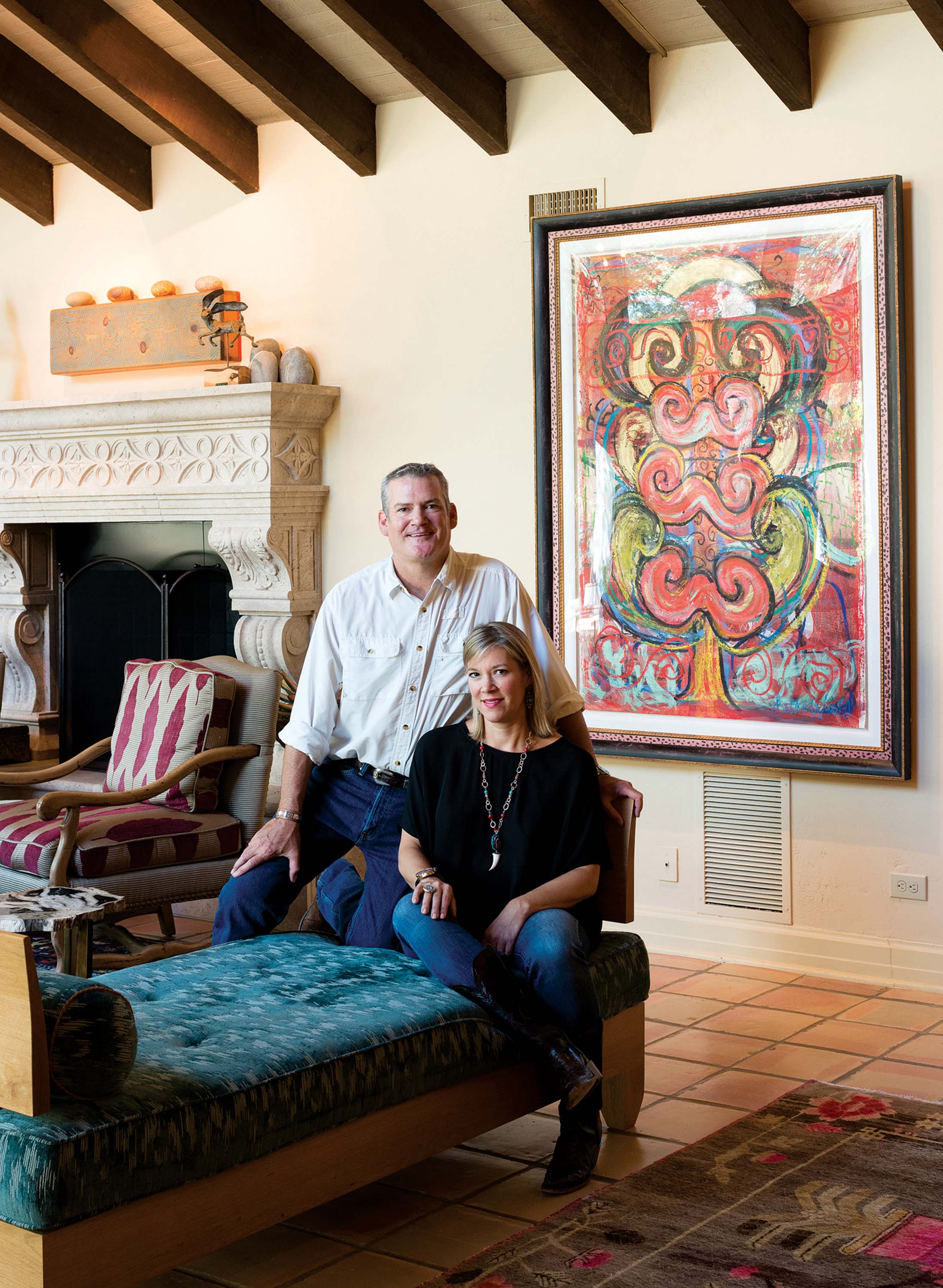
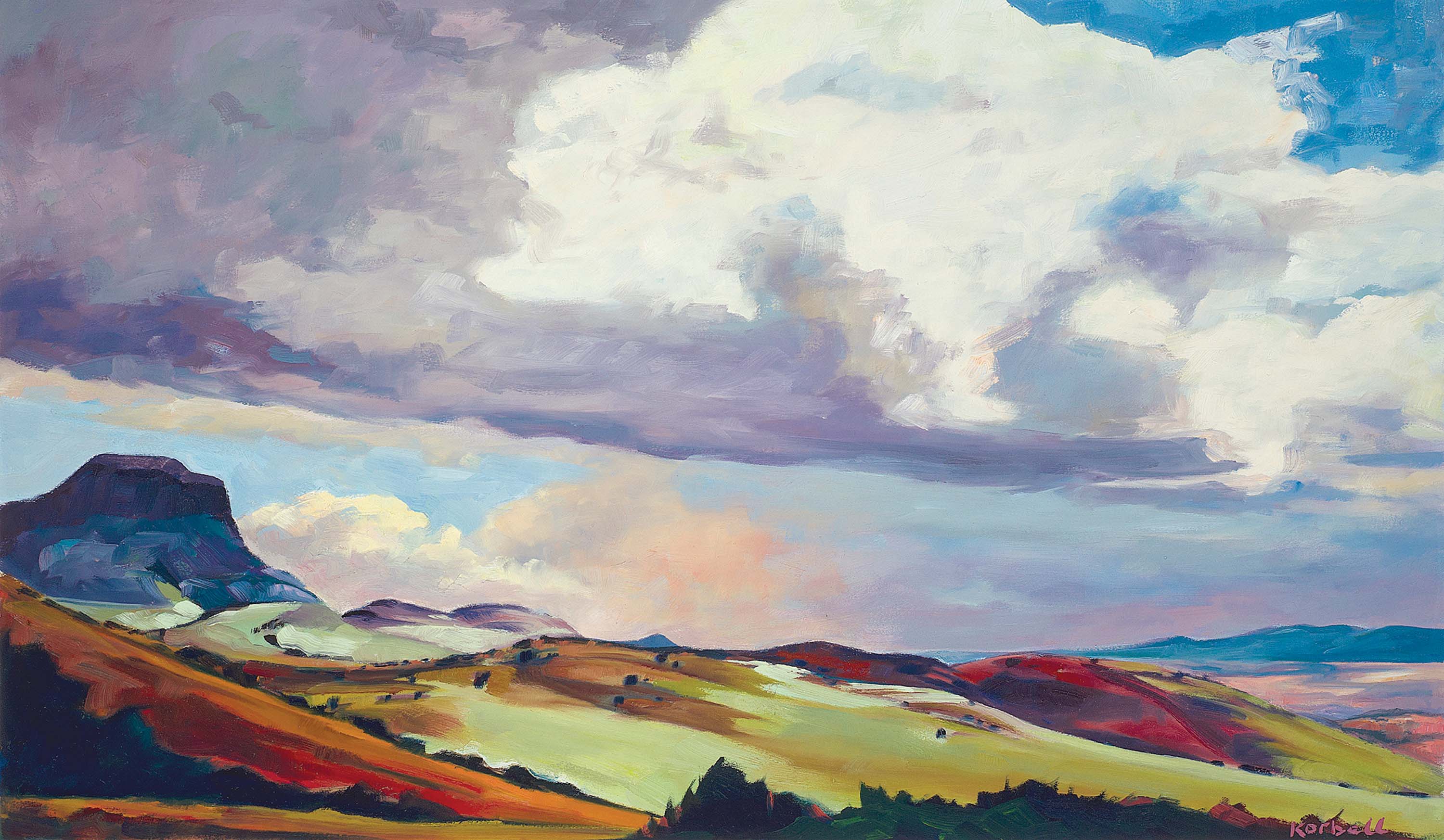
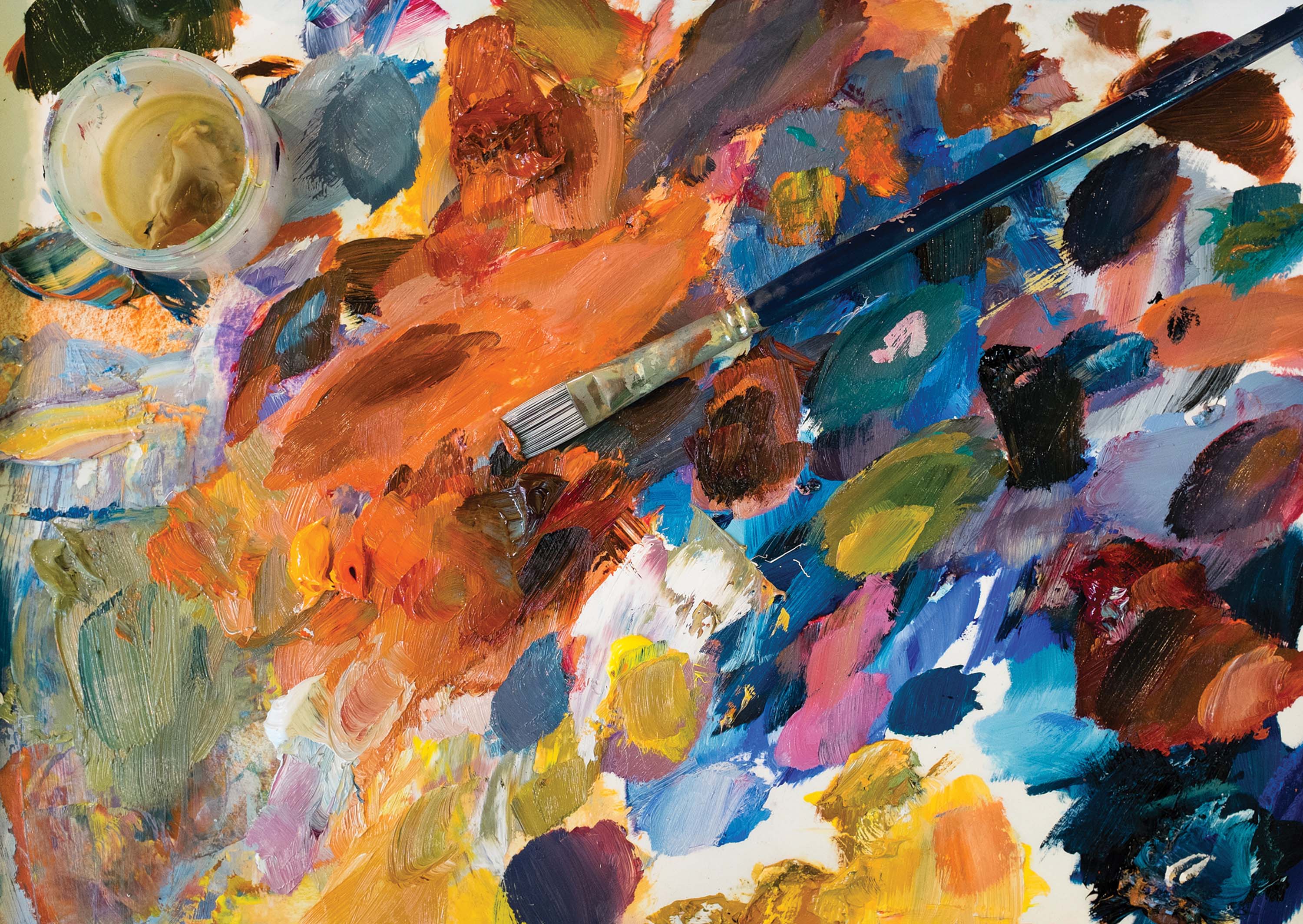
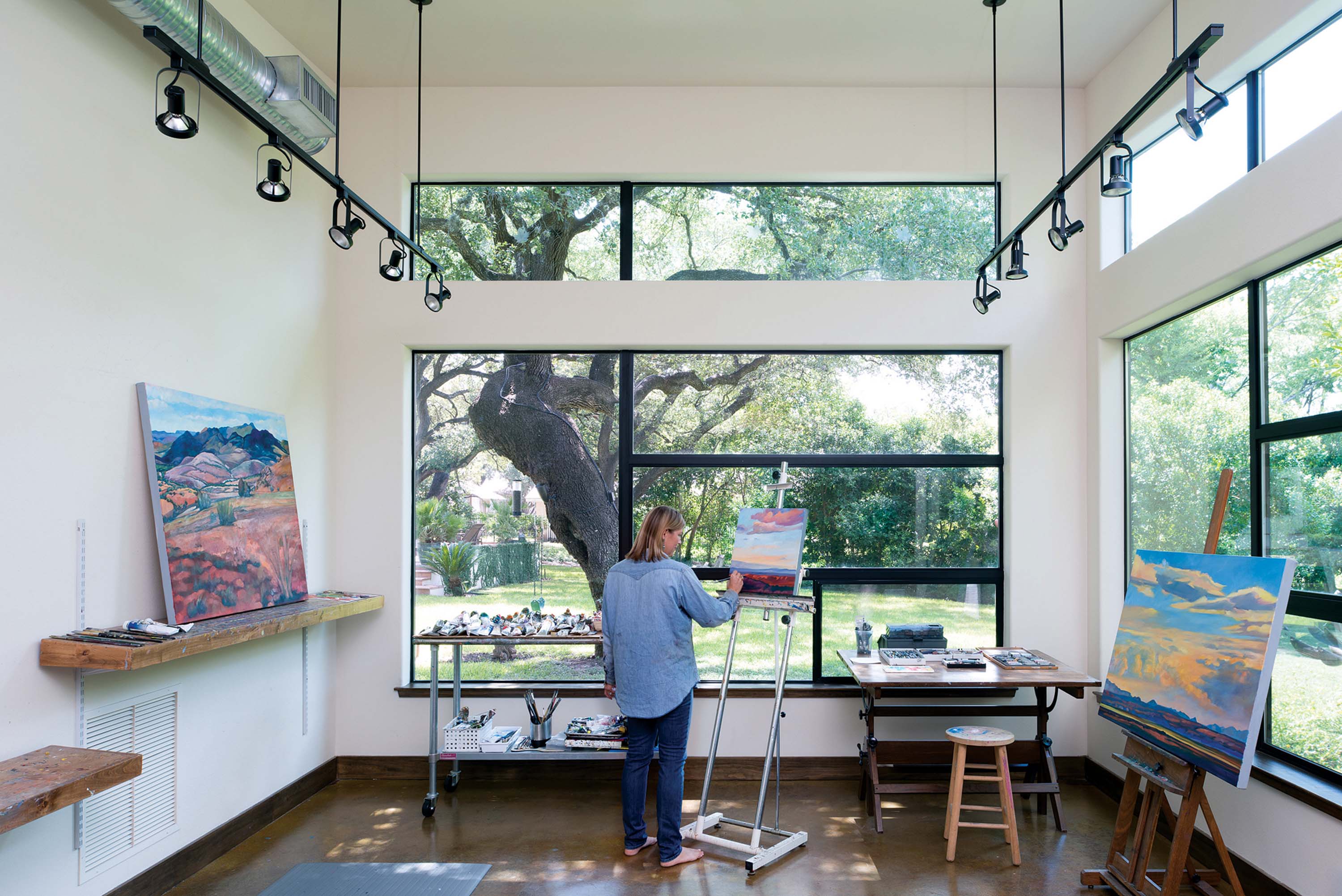

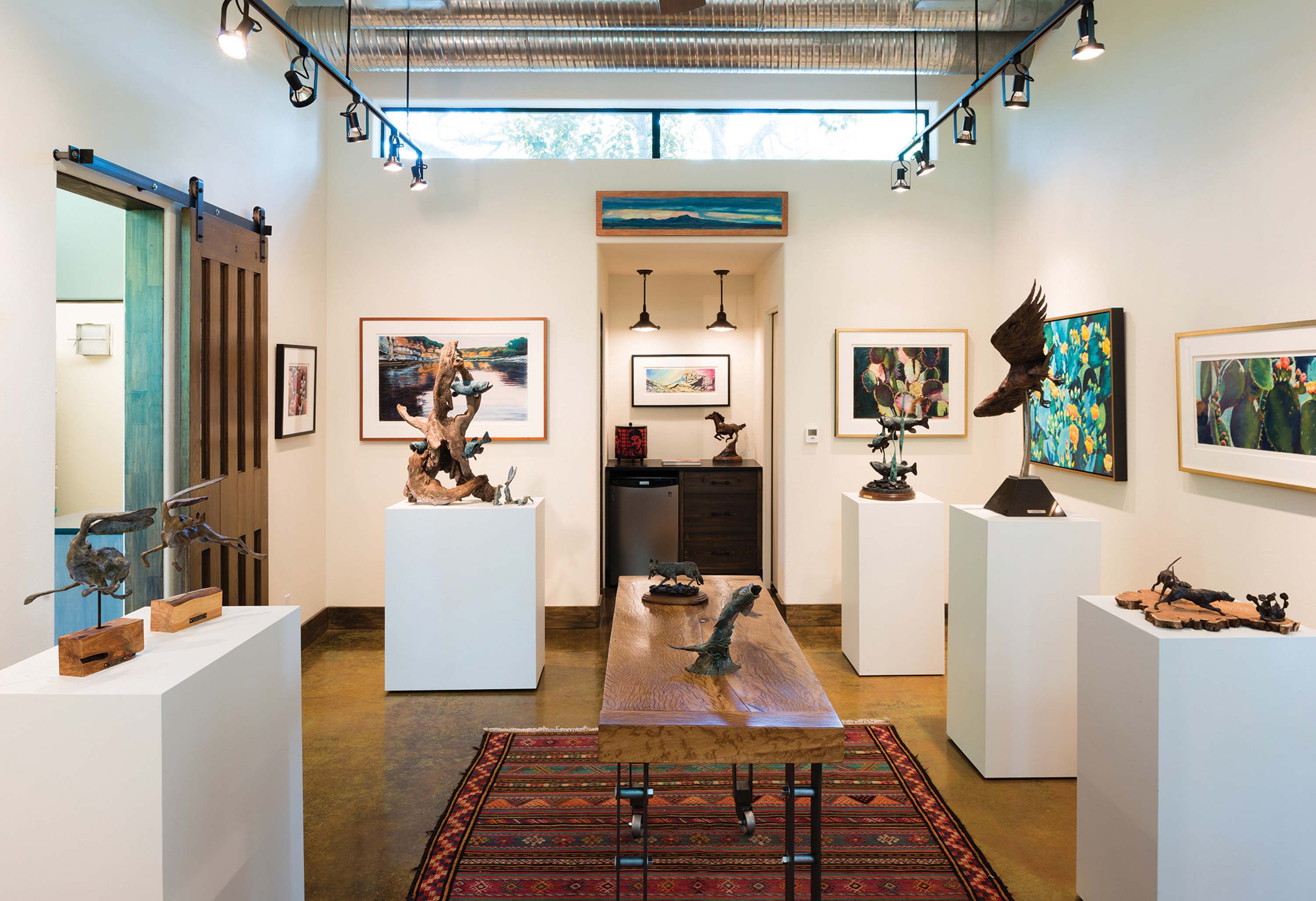
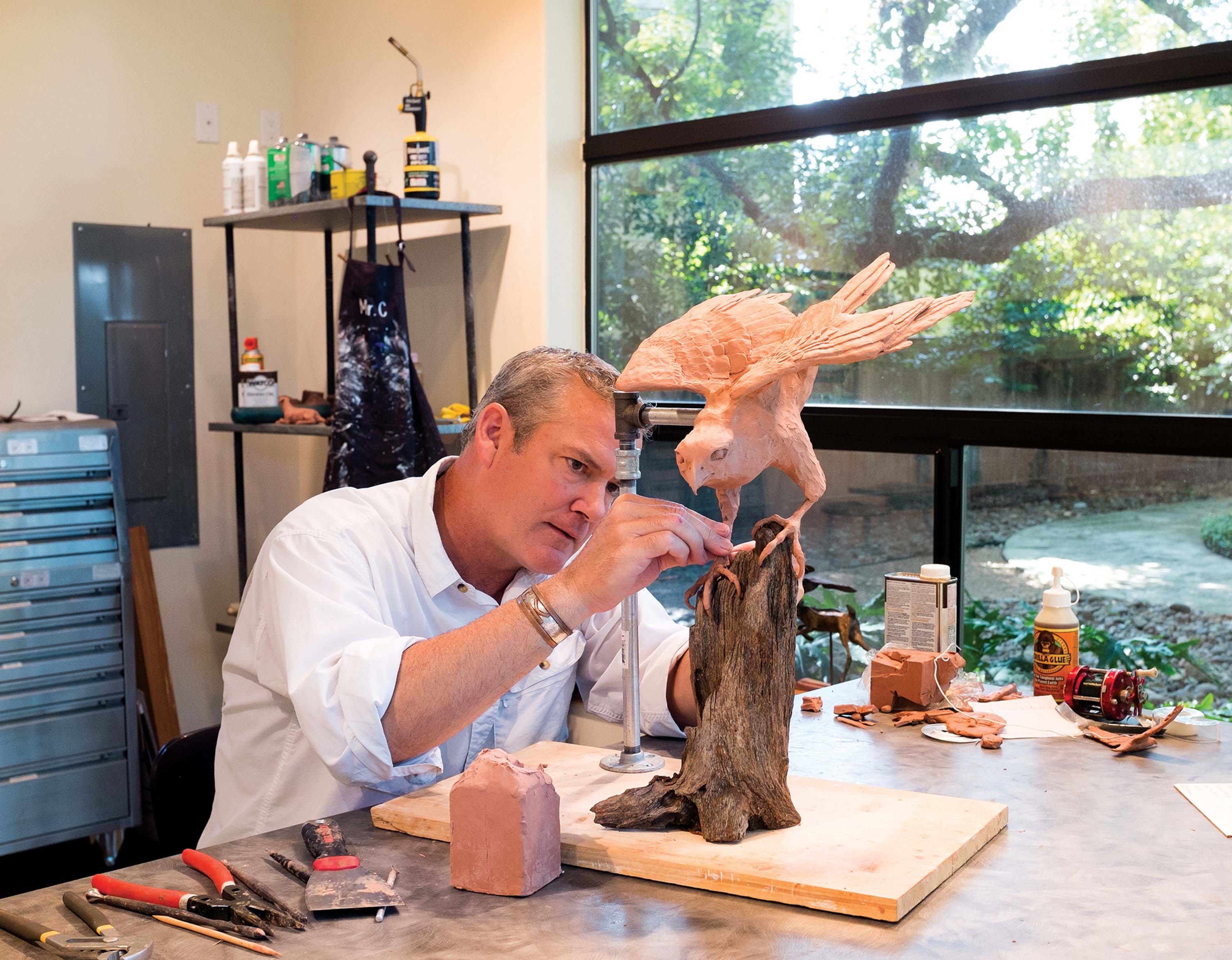
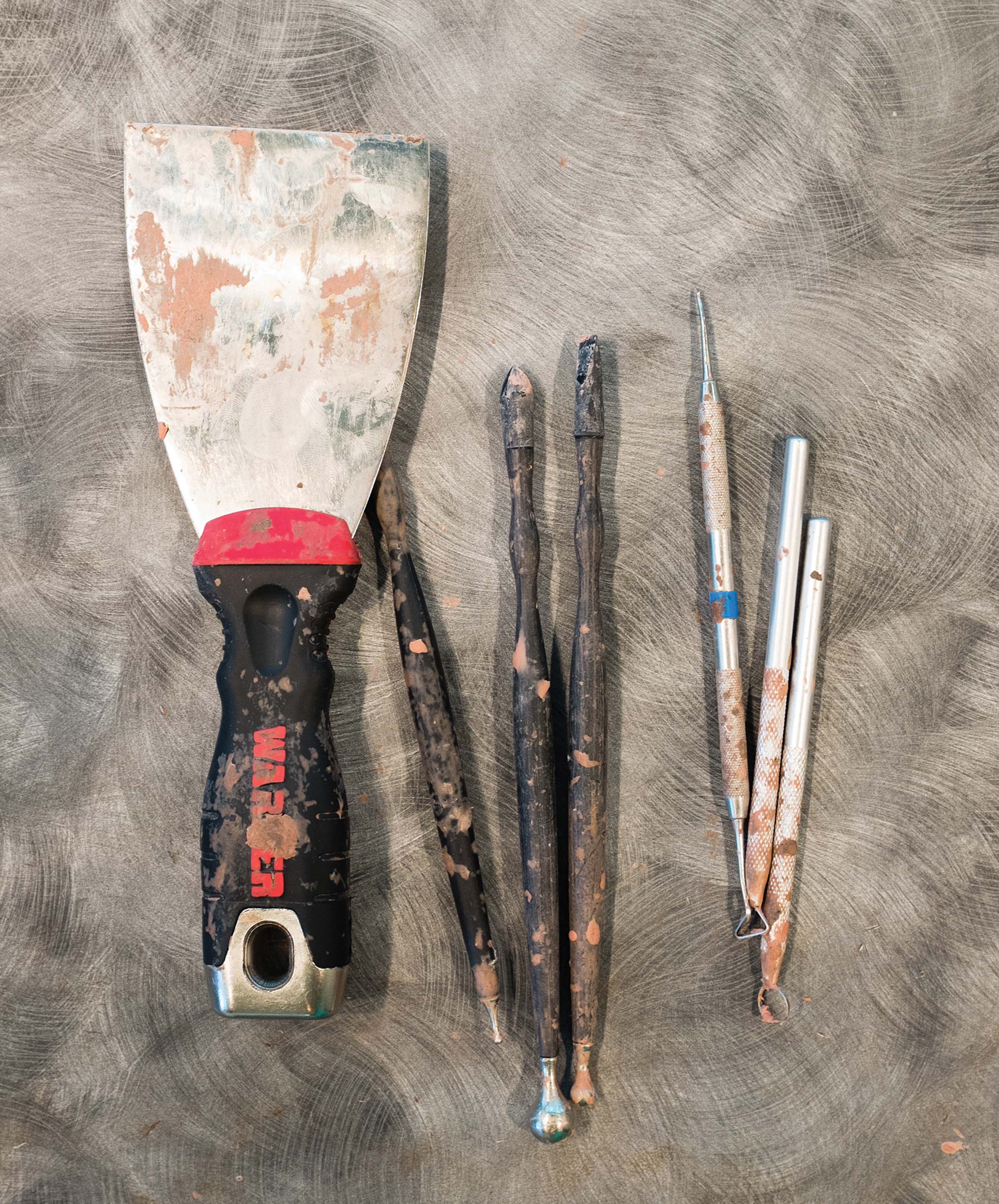
No Comments